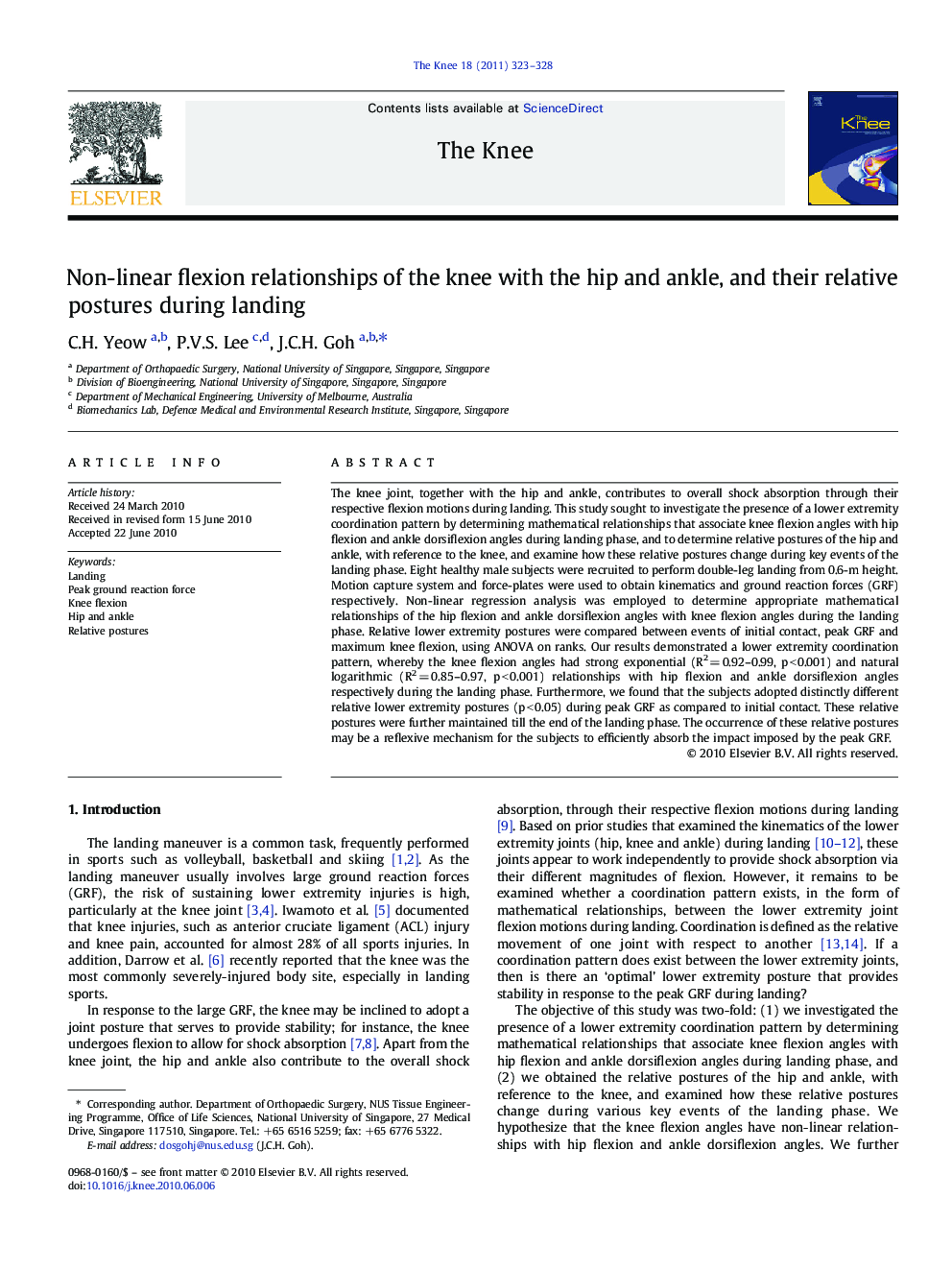| کد مقاله | کد نشریه | سال انتشار | مقاله انگلیسی | نسخه تمام متن |
|---|---|---|---|---|
| 4078027 | 1267239 | 2011 | 6 صفحه PDF | دانلود رایگان |

The knee joint, together with the hip and ankle, contributes to overall shock absorption through their respective flexion motions during landing. This study sought to investigate the presence of a lower extremity coordination pattern by determining mathematical relationships that associate knee flexion angles with hip flexion and ankle dorsiflexion angles during landing phase, and to determine relative postures of the hip and ankle, with reference to the knee, and examine how these relative postures change during key events of the landing phase. Eight healthy male subjects were recruited to perform double-leg landing from 0.6-m height. Motion capture system and force-plates were used to obtain kinematics and ground reaction forces (GRF) respectively. Non-linear regression analysis was employed to determine appropriate mathematical relationships of the hip flexion and ankle dorsiflexion angles with knee flexion angles during the landing phase. Relative lower extremity postures were compared between events of initial contact, peak GRF and maximum knee flexion, using ANOVA on ranks. Our results demonstrated a lower extremity coordination pattern, whereby the knee flexion angles had strong exponential (R2 = 0.92–0.99, p < 0.001) and natural logarithmic (R2 = 0.85–0.97, p < 0.001) relationships with hip flexion and ankle dorsiflexion angles respectively during the landing phase. Furthermore, we found that the subjects adopted distinctly different relative lower extremity postures (p < 0.05) during peak GRF as compared to initial contact. These relative postures were further maintained till the end of the landing phase. The occurrence of these relative postures may be a reflexive mechanism for the subjects to efficiently absorb the impact imposed by the peak GRF.
Journal: The Knee - Volume 18, Issue 5, October 2011, Pages 323–328